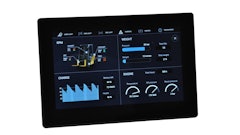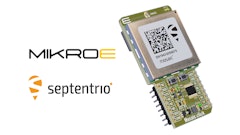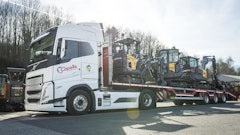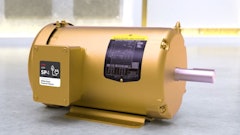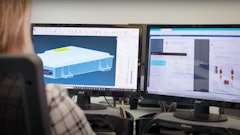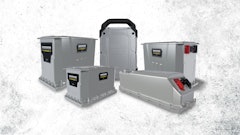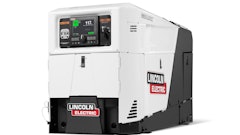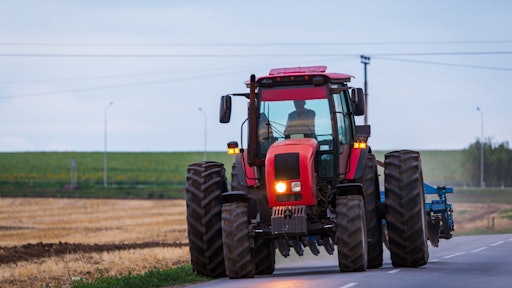
The United States Department of Transportation (USDOT) has a draft plan for road safety, which took years — decades, even — to develop. During that time, technologies evolved, varying interests competed for bandwidth, politics changed, and the government found it must juggle the diverse needs of multiple stakeholders in order to achieve its ultimate mission: the eventual elimination of crashes on American roadways. Its draft plan, published in 2023, seeks to enable a safe, efficient, equitable and sustainable transportation system through the national, widespread deployment of interoperable vehicle-to-everything (V2X) technologies. “The U.S. has the technology and the resources to make its roadways substantially safer,” said Austin Gellings, director, Agriculture Services, Association of Equipment Manufacturers (AEM). “The USDOT’s plan is an important first step. From the agricultural safety standpoint, this is our opportunity to collectively begin to perfect connected communication.”
“There’s a high risk coming from agriculture machinery driving on roads, and although the number of accidents between agriculture machines and passenger cars is not that great, when they do happen, they typically have serious consequences,” said Johann Witte, head of Advanced Development Electronics, CLAAS.
Whether it’s a grain cart, multiple combines, or a variety of ag machinery, each piece of equipment will know where the other one has been, and where it is going. And it’s not just equipment that will be connected; it’s the equipment’s connection to everything.
V2X
V2X is the all-encompassing term for a vehicle’s connected communications, or the idea that a vehicle will be able to use its on-board communication tools to deliver real-time traffic information, react to changing road conditions, recognize road signs and warnings, and more. This interconnected system depends on the exchange of real-time information to improve traffic efficiency, enhance safety, and enable autonomous driving.
According to the USDOT’s plan to accelerate V2X, achieving and sustaining interoperability is necessary to fully realize the benefits across the nation. Interoperable V2X deployments will rely upon standards and wireless technologies that must work together to function effectively. V2X is fundamentally a cooperative technology where the benefits on a large scale are many times greater than the benefits of individual systems. “We are appreciative of the accelerated rollout of V2X technology in the U.S. and the stable framework set in place,” said Tobias Nothdurft, manager of Research and Advanced Engineering, AGCO. “This gives companies a solid foundation for series introductions.”
The On-Ramp to the Next Level
Part of the USDOT’s road safety plan for V2X is the “Safety Band,” a band of wireless spectrum at 5.9 GHz reserved for transportation-related communications among the devices that support connected and automated vehicles. The ag industry is awaiting the next level of connectivity: Wireless-Infield-Communication (WIC). The evolving digitalization of agriculture will require WIC between agricultural machines. According to the Agricultural Industry Electronics Foundation (AEF), WIC serves as a facilitator for seamless and interoperable collaborative fieldwork, playing a pivotal role in addressing road safety concerns during transit to and from the field. AEF, a global industry organization, is working behind the scenes on interoperable technologies like WIC to provide the protocols for ag machinery OEMs to make safe, precise and smart vehicles that communicate in real time in the field. AEF consists of almost 300 ag business-related companies and universities from around the world.
These groups provide the technical methods and procedures to enable open communication and interfacing between electronic systems of different ag machinery from independent manufacturers. The role of the organization is to make technology available across the agriculture industry, and one of its goals is to increase safety and decrease accidents between ag machinery and passenger vehicles.
AEF’s WIC team is focused on allowing machines from different manufacturers working in the same field, or on the same operation, to communicate wirelessly. WIC technology will allow tractor and implement combinations from different OEMs to work together cooperatively in the same field to make the infield activities more efficient where multiple machines are used simultaneously. “We started in 2018 with the first rough pilot technology, and over the last few years we have had demo events with real machines,” said Norbert Schlingmann, general manager, AEF. They have chosen an existing radio standard according to requirements like range, data rate, latency and availability that will work in most parts of the world, including North America and Europe.
This will be combined with a communication middleware provider, to enable manufacturers of ag machines to integrate a brand interoperable, machine-to-machine, in-field communication channel, similar to a Bluetooth standard for tractors. This will enable coverage map sharing between machines of different colors, camera (on one machine) and remote display (on another machine), even platooning (one machine controlling another) will be possible. In addition, this type of communication can be used to communicate to road users (cars and trucks) when there is an ag machine entering the road. This interoperability between machine brands will allow customers to benefit from reduced operator strain and fatigue (e.g. automated procedure for offloading grains to a trailer).
Different Paths to Road Safety
While ag equipment is used around the globe, the geography, standards and technology are all different country to country, and continent to continent.
“The safety band in the U.S. can be used for road safety use cases only, and this band should support the use cases AEF has shown in our road safety demos during 2023,” said Nothdurft. “However, this band wouldn’t be sufficient from a throughput perspective for in-field communication use cases, and it is not permitted to be used for non-safety applications like process data exchange. So, we would need to use other frequency bands and wireless technologies like Wi-Fi for this.”
“Looking at the amount of ag equipment produced, you can see it is a niche application compared to passenger cars or even trucks,” said Witte.
Automaker Volkswagen, for example, has already begun deployment of this technology in Europe and now has more than one million passenger cars equipped with radio technology, enabling them to talk to other vehicles similarly equipped with this technology. AEF is in close contact with Volkswagen, as all new models in the EU will be equipped with this technology.
“In the U.S., the goal of road safety is possible. There is a single channel, which is a sufficient amount, at least for a lot of these day one use cases,” said Witte. “In Europe, it’s a bit different. There’s more space allocated for the [Cooperative Intelligent Transport Systems] C-ITS systems, not only for road safety, but also efficiency topics.” According to Nothdurft, most of the learnings AEF has gathered from prototypes and initial tests can be transferred to the U.S. market. “The vehicle ISOBUS interface can stay the same. There are chipsets and communication stacks available covering both markets and radio communication requirements,” he said.
“A certain amount of spectrum is available for doing wireless communication. And when we are talking about C-ITS today, available chip sets are capable for working in different areas of the spectrum and supporting different radio protocols,” said Witte. “I’m not afraid of supporting both in the end. It’s more about the decision of the car manufacturers, which technology will be introduced in which market, and then [adopting] it within our machinery.”
Driving the Industry Forward
As things progress, existing standards will need to grow and be adapted, but right now, the agricultural industry has come together to collaborate on these efforts. Accelerating V2X deployment is an important step toward saving lives through connectivity. V2X, WIC and autonomy are transformational technologies that will not only advance safety, but also enhance efficiency and reduce negative environmental impacts.
“We are all pushing toward zero accidents and zero accident-related deaths. If it saves one life, it’s worth it,” said Gellings. “But how we get there, and what that road looks like, will require collaboration within the industry and with our external stakeholders.”
“Autonomy is going to play a piece in that effort, but I don’t know if that’s going to be the only answer. That’s why it’s so important that we work together, both within our industry, with other industries, with government and other external stakeholders; we need to find ways that work for everybody.”
Ryan Milligan is director of business development at Powell Electronics’ Powell Agricultural Solutions and deputy team leader for communications and marketing for the Agricultural Industry Electronics Foundation (AEF).



